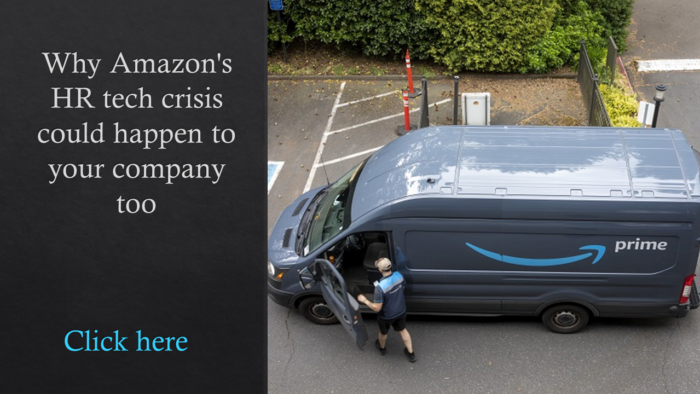HR’s use of benefits technology has been rising over the last several years, as companies focused not only on ways to inform workers of their offerings and improve the employee experience, but to save themselves time as well.
But like many things, COVID-19 rapidly accelerated the trend. As employers dealt with a series of challenges while trying to taking care of their employees—and quickly getting them additional help and resources—company and HR leaders more aggressively turned to benefits and wellbeing tech solutions to help.
The result? Investments in benefits and wellness tech ballooned to $2 billion in 2021.
“There’s an incredible amount of focus on the space right now,” says George LaRocque, founder and principal analyst at WorkTech.
LaRocque will speak about the increasing role of benefits technology, and will examine companies and vendors making big moves in the market, at HRE’s Health & Benefits Leadership Conference next month in Las Vegas. He will “show the landscape, the trends and how these different technologies and specific products are fitting in that landscape,” he says of his upcoming session April 6.
Ahead of his presentation at HBLC, HRE spoke to LaRocque about the areas in benefits tech that are growing quickest and how COVID-19 has reshaped adoption.
HRE: What do you attribute the growth that you’ve seen in benefits technology to, and what areas are growing?

LaRocque: [Investment of] $2 billion was a good year, a few years ago, for all of HR tech. It’s a lot of money. A lot of that money has gone toward mental wellness, mental wellbeing.
Some tech is bringing psychologists or therapists into the workplace and giving employees more access. That’s been one big area, and then the other is around the experience. Think about the experience of an employee—whether you’re onboarding and selecting new benefits, or whether it’s open enrollment time or whether you have a major life event. Employees aren’t experts in benefits, so they get thrown into these environments where having a system that can be more intuitive, remember you and make recommendations, and provide more assistance in making those selections, provides a better experience. And that contributes to a better [employee] experience and converts to retention and how [an employee] feels about the employer and about [their] overall package.
Financial wellness would be another area that we’re seeing a lot of growth. There are student loan debt benefits, on-demand pay, coaching around finances. There’s so much happening, but those are three of the areas that have driven a lot of investor interest.
Related: The ‘most needed employee benefit,’ according to financial guru Suze Orman
HRE: Tell me about how the pandemic has shifted the conversation in benefits and wellbeing technology.
 LaRocque: Wellbeing is definitely a big part of the story around that shift. So, when the pandemic hit, the first thing every CEO that I talked to did was looked at the business, and asked, “Is the business OK?”
LaRocque: Wellbeing is definitely a big part of the story around that shift. So, when the pandemic hit, the first thing every CEO that I talked to did was looked at the business, and asked, “Is the business OK?”
Then it quickly shifted to understanding the impact on the workforce: “Are my people OK?” Of course, it was about [addressing] if they have what they need to get work done, but then really quickly, it [focused on] the stress that was put on frontline workers, the stress of folks that are having to work from home, everything. While there were mental wellness and wellbeing trends pre-COVID and many existing providers had these benefits in market and there was some adoption, it was very difficult to correlate those solutions to the business so that they get the C-suite’s attention to get a massive adoption across an enterprise. That changed in COVID. These companies saw some incredible traction in growth. Having a place for employees to get assistance and help definitely drove a lot of adoption in that space.
HRE: You’ve said that connecting the dots between benefits and the business impact has been a major hurdle in the past. Why do you think that is, and is that changing?
LaRocque: Part of the change is the reckoning that’s taking place and understanding that [employers] have to get benefits and pay right. There’s always been some competition around that. But if you didn’t have that solved pre-pandemic, it definitely hasn’t helped you in this Great Resignation.
It’s difficult to put together a spreadsheet that shows that, because [companies] offer certain benefits, [there is a] correlation to retention or to creating a happier workforce or a more stable workforce that is therefore more productive. But those dotted lines got filled in through the pandemic so that the argument for a lot of these benefits, and the argument for the reason why they’re needed strategically, became much more clear to the C-suite.
HRE: What about in the future?
 LaRocque: I think we’re moving into an era now where a lot of stuff that was adopted, now needs to be proven right. HR has been in the spotlight—they’ve purchased a lot of that technology. And now a couple of years later, this is when contracts are coming due and renewal is coming due. So now it’s, “Show me what good this has done for the business.” It’s an important lens for HR to have right now on how they can demonstrate the success of what they’ve implemented.
LaRocque: I think we’re moving into an era now where a lot of stuff that was adopted, now needs to be proven right. HR has been in the spotlight—they’ve purchased a lot of that technology. And now a couple of years later, this is when contracts are coming due and renewal is coming due. So now it’s, “Show me what good this has done for the business.” It’s an important lens for HR to have right now on how they can demonstrate the success of what they’ve implemented.
HRE: For HR or benefits managers trying to determine what benefits technology to invest in, what’s one thing that they should do to start that process?
LaRocque: I would look internally; I would get some real data about my workforce and about what they’re experiencing right now and what they feel they need. I would definitely start with that. And then as that starts to shape what gaps I need to fill, or what I need to improve, I would then go to my network—my internal network, my professional network—and I would start to explore without the external input of salespeople and the marketing hype. I would explore how other companies that have a workforce like mine, or similar to mine, address these issues and what’s been put in place. You can get pretty far by making that effort.
The post Benefits technology is having a moment—and COVID is partly responsible appeared first on HR Executive.